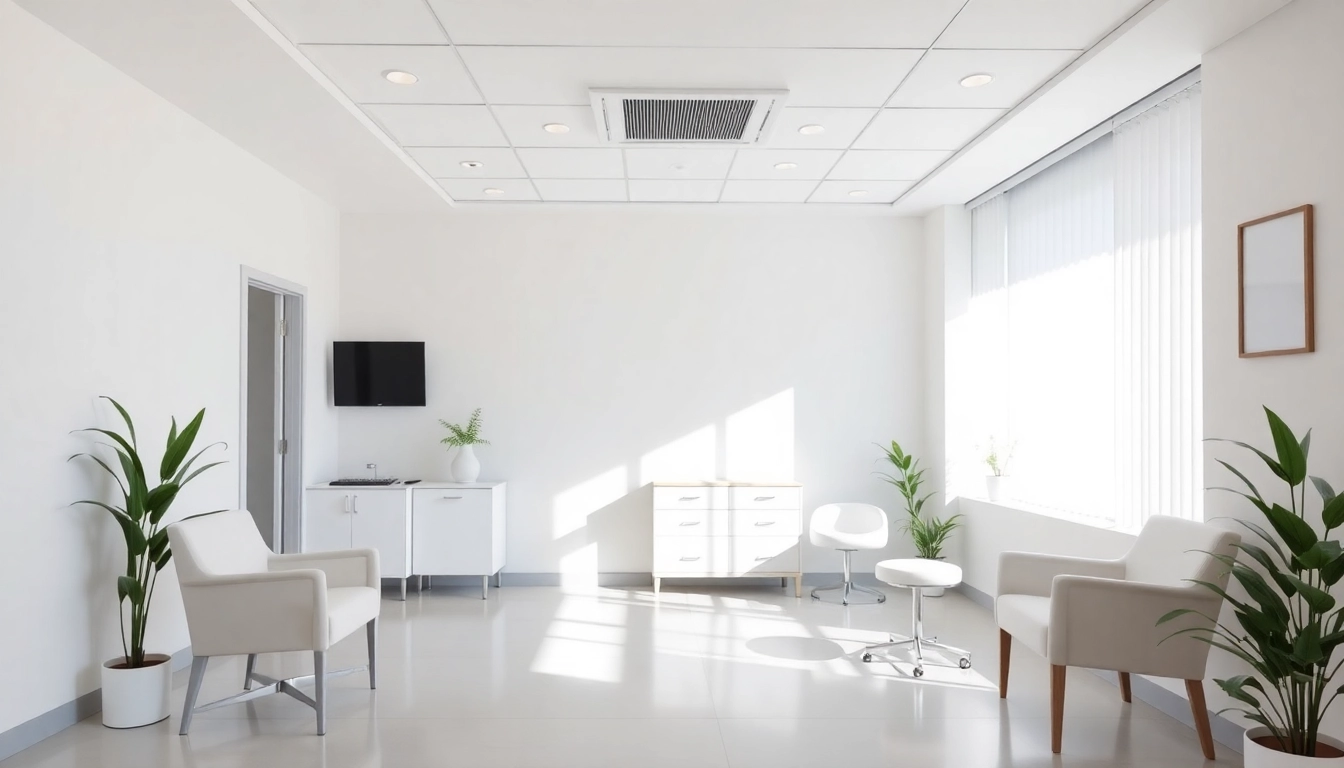Introduction to Aesthetic Treatments
Aesthetic treatments encompass various procedures that enhance physical appearance through non-surgical and surgical methods. From smoothing wrinkles to rejuvenating skin, these treatments aim to improve self-esteem and confidence while offering minimal disruption to the patient’s daily life. A particularly notable approach in these treatments is the use of Behandlung with Botulinum toxin, commonly known as Botox, which has gained immense popularity for its effectiveness.
What are Aesthetic Treatments?
Aesthetic treatments refer to a broad category of procedures aimed at improving physical appearance. These can include cosmetic surgery, non-invasive procedures, and various skin treatments. Within these options, individuals can choose methods that best align with their beauty goals, whether they seek subtle enhancements or more pronounced changes in their appearance.
Benefits of Non-Surgical Treatment
Non-surgical aesthetic treatments offer numerous advantages. Firstly, they typically entail quicker recovery times compared to surgical procedures. This means that patients can return to their daily duties often immediately after treatment with little to no downtime required. Furthermore, many non-invasive techniques, such as Botox and fillers, can be performed in a matter of minutes, making them convenient for individuals with busy schedules. Most importantly, non-surgical options allow for gradual improvements, enabling patients to assess their satisfaction with results and opt for further treatment if necessary.
Overview of Popular Treatments
Among the various aesthetic treatments available today, some of the most sought-after methods include:
- Botulinum toxin (Botox) injections for wrinkle reduction
- Hyaluronic Acid fillers for volumizing and contouring
- Chemical peels for skin rejuvenation
- Laser treatments for hair removal and skin resurfacing
- Microneedling for improving skin texture and tone
- Body contouring procedures like CoolSculpting
Botulinum Toxin (Botox) in Depth
What is Botox and How Does the Treatment Work?
Botulinum toxin is a neurotoxic protein produced by the bacterium Clostridium botulinum. In cosmetic applications, it serves to block nerve signals within targeted muscles, resulting in temporary muscle relaxation. This effect smooths out facial wrinkles and fine lines effectively, leading to a refreshed appearance. The procedure involves a series of small injections into the desired muscle groups, and results can vary based on the individual’s muscle metabolism and treatment area.
Typical Application Areas for Botox
Botox is primarily used in the following facial areas:
- Forehead lines: Smoothing the horizontal lines that appear with age.
- Glabella (frown lines): Targeting the vertical lines between the eyebrows.
- Crows feet: Addressing those fine lines at the outer corners of the eyes.
- Bunny lines: Smoothing the wrinkles on the bridge of the nose.
- Smokers lines: Reducing fine lines around the lips.
- Eyebrow lift: Achieving a subtle lift to enhance the brow’s arch.
Pre- and Post-Care for a Botox Treatment
Pre-care involves a thorough consultation with a qualified practitioner to discuss expectations, assess suitability, and establish a treatment plan. It may also include avoidance of blood thinners, alcohol, or aspirin preceding the treatment to minimize bruising. Post-care usually focuses on avoiding vigorous exercise, excessive sun exposure, or lying down for several hours post-treatment to ensure optimal results.
Hyaluronic Acid vs. Botulinum Toxin
Differences in Treatment Mechanism
While both Botox and hyaluronic acid are integral to modern aesthetic practices, they function differently. Botox primarily relaxes muscles to reduce dynamic wrinkles, while hyaluronic acid is a filler that adds volume and hydration to the skin, addressing static wrinkles that occur as skin loses elasticity. This distinction is crucial when considering the most effective treatment for individual beauty desires.
When is Each Treatment Appropriate?
Botox is ideal for patients looking to smooth dynamic wrinkles, often forming in areas of facial expression. On the other hand, hyaluronic acid fillers are better suited for volumizing areas that have lost fullness, like the cheeks or lips, or for correcting deeper lines around the mouth. A professional assessment can provide clarity on the most beneficial options for each patient.
Combination Treatments for Optimal Results
Combining both treatments can often yield the best outcomes. For example, pairing Botox for forehead and frown line smoothing with hyaluronic acid fillers for cheek volume can create a more youthful, refreshed appearance without invasive procedures. This multidisciplinary approach provides comprehensive facial rejuvenation.
Patient Reviews and Testimonials
Key Factors for Patient Satisfaction
Patient satisfaction significantly hinges on factors including trust in the provider, realistic expectations, and the quality of results. Each of these aspects plays a crucial role in ensuring that clients feel valued and appreciated throughout their treatment journey. Careful selection of practitioners who foster open communication and personalized service can improve overall patient experience.
Impact of Testimonials on Treatment Choices
Experiences shared through testimonials influence new clients’ choices significantly. Positive reviews highlight effective results and satisfaction, while critiques often point out potential pitfalls. Engaging with prior patient experiences can aid prospective clients in aligning their expectations accurately with potential outcomes.
Patient Perspectives on Treatments in Zurich
In Zurich, the emerging beauty industry has allowed numerous practices to emerge. Patients have expressed high satisfaction rates when treated by experienced professionals, recognizing the value they deliver in cosmetic enhancements. Many patients appreciate the individualized care plans and thorough post-treatment follow-ups provided.
The Future of Aesthetic Treatments
Emerging Trends in Aesthetic Medicine
The aesthetic industry is continually evolving, with trends shifting toward more natural-looking results that prioritize patient health and well-being. Developments in aesthetic devices, minimally invasive techniques, and sustainable products are underscoring a conscientious movement in enhancing beauty responsibly.
Technological Advancements and Their Influence
Technological developments in aesthetic medicine, such as enhanced imaging techniques for treatment planning, allow for more precise applications and outcomes. Innovations like 3D printing for custom fillers and AI in personalized care recommendations are shaping future treatments and how practitioners approach cosmetic procedures.
Sustainable Practices in Aesthetic Medicine
The push for sustainability is finding its way into aesthetic medicine as well, with practices emphasizing environmentally responsible treatments and materials. This encompasses everything from sourcing organic skincare lines to implementing eco-friendly disposal methods for used materials. Increasingly, patients demand treatments that align with both personal values and broader societal impact.
